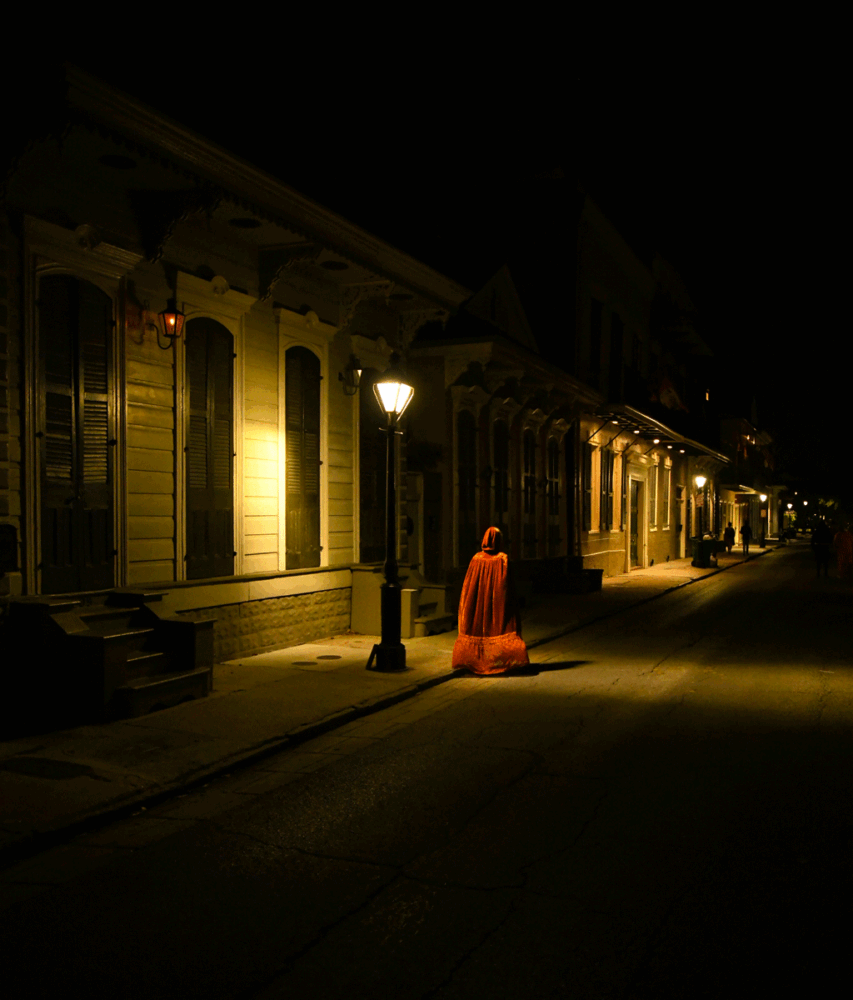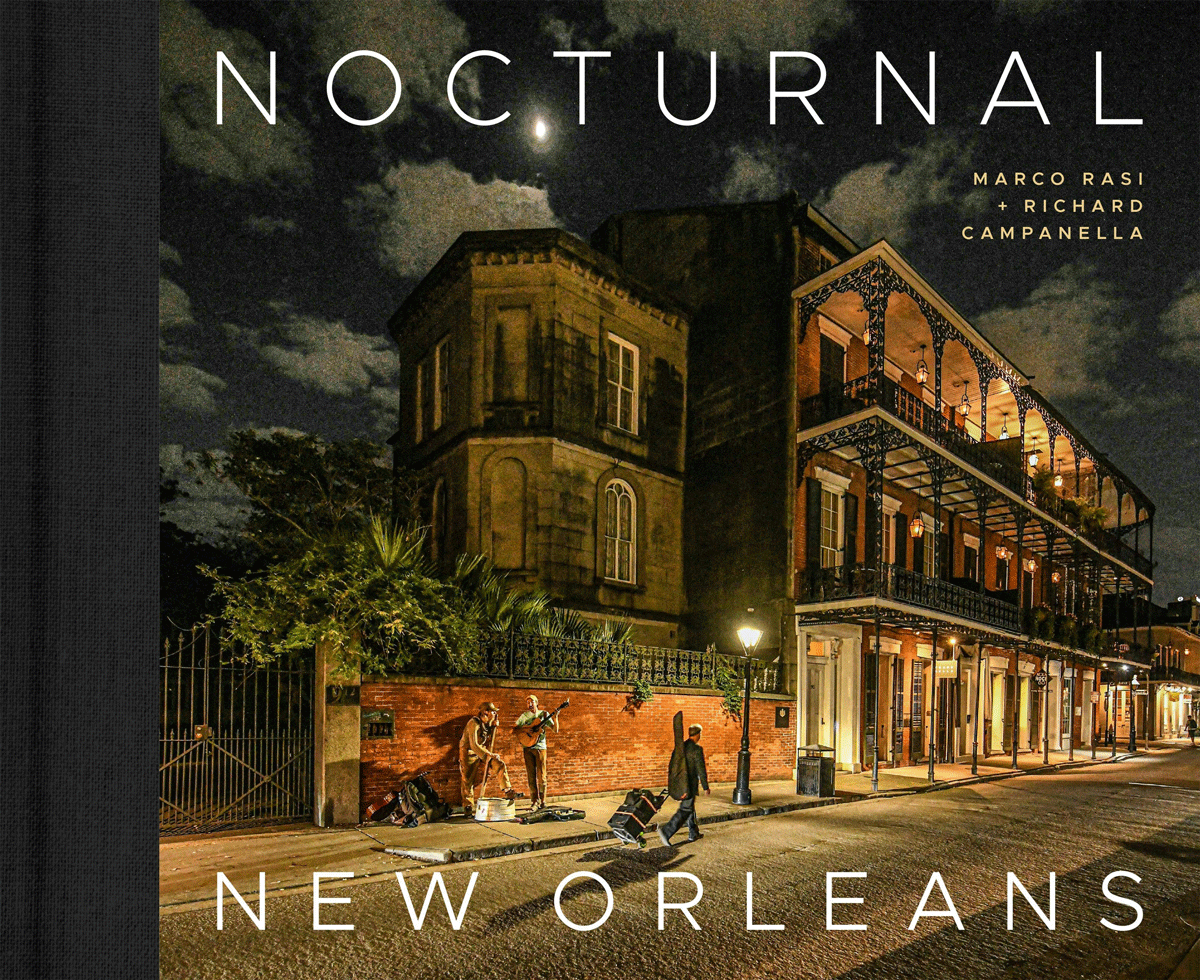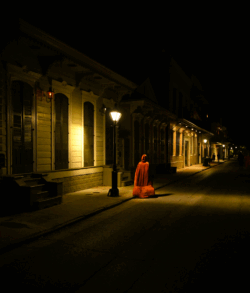Fall 2024
The Witching Hour
An excerpt from Nocturnal New Orleans
Published: September 1, 2024
Last Updated: December 1, 2024

Photo by Marco Rasi, LSU Press
A figure cloaked in red stalks through the French Quarter at night.

With photographs by Marco Rasi and text by Richard Campanella, Nocturnal New Orleans heralds the jewel-like beauty of the Crescent City in darkness. Its stunning photographs demonstrate that the city’s allure is not merely construed or illusory; rather, it was born among transients in a diverse port city, at the nexus of a vast hinterland and a global foreland, where anonymity intersected with desire and opportunity. It began over three centuries ago, and it will continue this very evening.
The Witching Hour,” according to folklore, described the time when demons held sway over the forces of enlightenment. Figuratively, the phrase may infer that period of the sleep cycle when the most intense dreams possess the human mind, be they pleasurable, surreal, or terrifying. Weary urbanites speak wryly of the witching hour when they hear commotion down the street or ambulances in the distance.
The one commonality of all witching hours is their nocturnal setting—not twilight or evening but the fully ensconcing cloak of darkness, the likes of which breed mystery and unleash fear. “For ancient man, whose night was full of terrors, God’s first triumph was always a triumph over darkness,” observed A. Alvarez in his book Night, citing Genesis 1:2–3: “And the earth was without form, and void, and darkness was upon the face of the deep. . . . And God said, ‘Let there be light’: and there was light.” Throughout most world cultures, the diurnal/nocturnal cycle became a life metaphor, and rarely did it flatter the latter. “Day and night were expressions of eternal contrasts: good and evil, form and chaos . . . God and the devil.” Philosophers call it the light/dark dualism.
More so than most cities, it seems, New Orleans has a witching hour—no demons or witches, but a palpable wildness that emanates from darkened streets in the oldest neighborhoods. In desolate sections, it has a primeval feel, more like wilderness. “Night is the last frontier,” Alvarez posited, “and since the invention of artificial lighting we have colonized it [as] the Americans colonized the West.” But, he added, “Colonizing night is not the same as solving its mysteries.” Who has not looked up into the starry sky and not seen that frontier, that wilderness, that mystery? Now look down a darkened downtown street, and you might see something similar, an unknowable urban heterotopia in all its ethereal clandestine.
EXCERPT FROM:
Nocturnal New Orleans
Photographs by Marco Rasi
Text by Richard Campanella
$59.95; 264 pp.
Louisiana State University Press
August 2024

